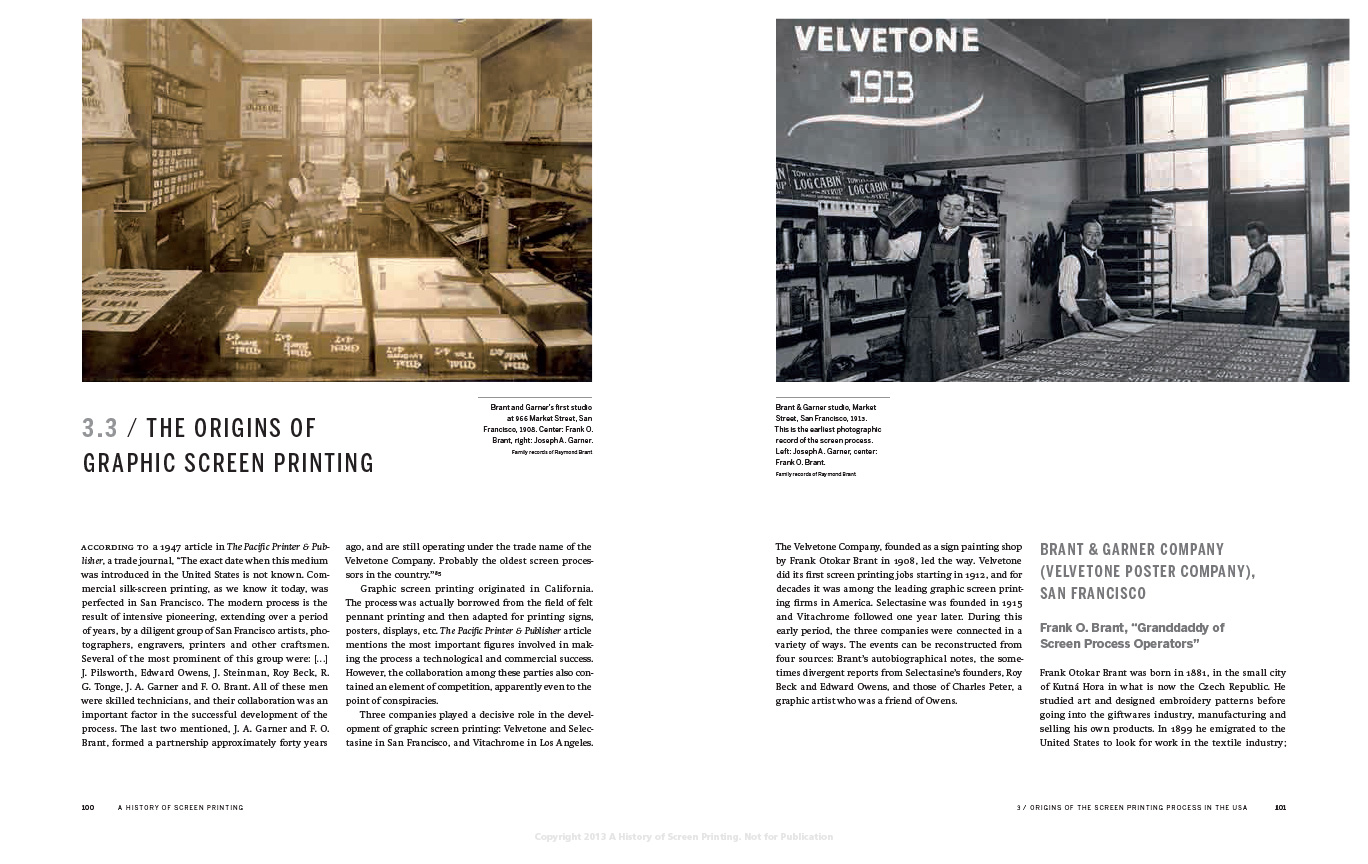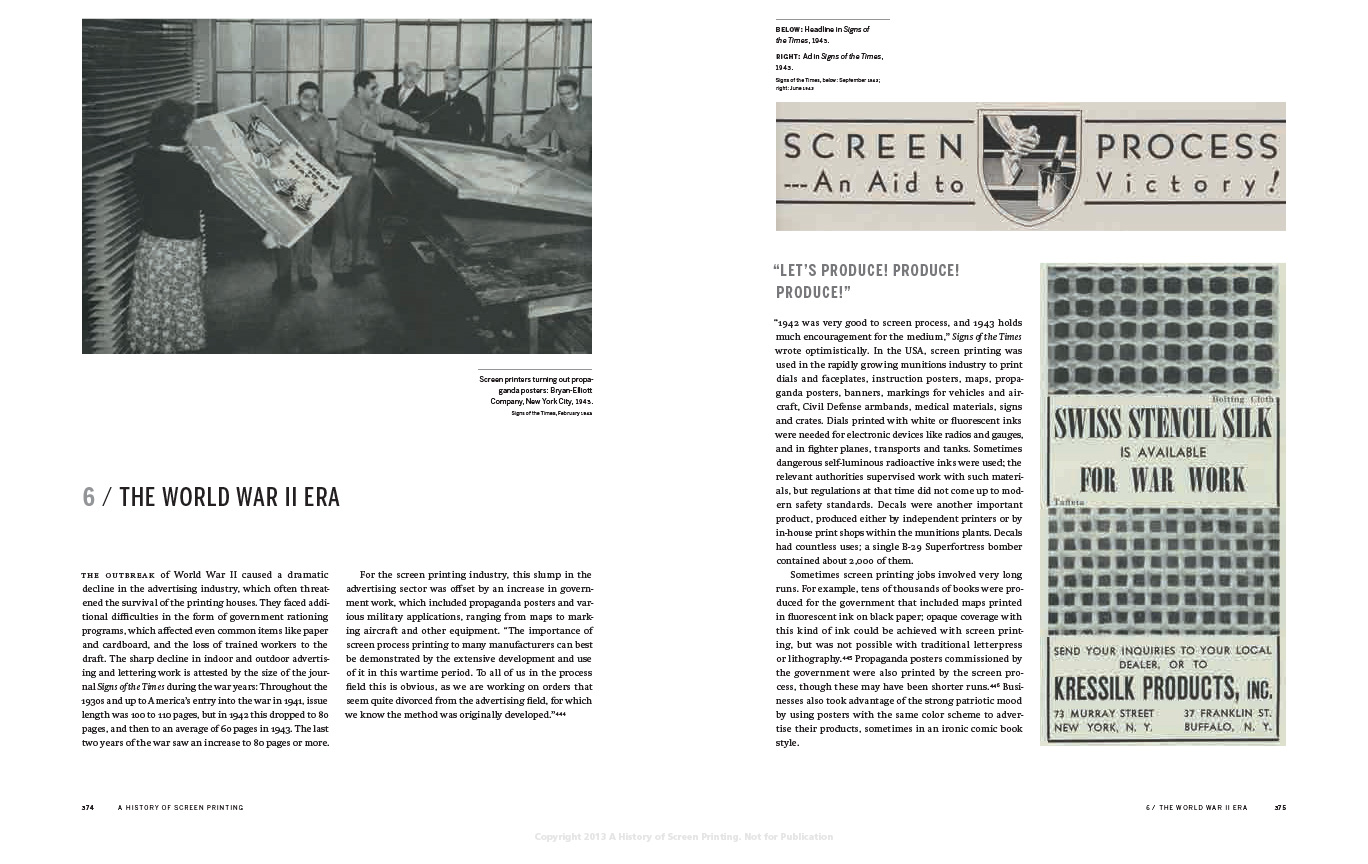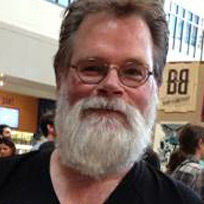
Working with author Guido Lengwiler, we are excited to share a look inside at some sample pages and passages from the book. We can’t replicate the weight, the new book smell of the nearly 500 pages, or the feel of the pages as they turn in your hand, but we can give you a small taste. Enjoy!
Scroll down to see what's inside.
click here to buy A History of Screen Printing

The contents give you an idea of the areas of research and the scope of the book – that’s Hans Caspar Ulrich, printing windows announcing the first major screenprinting exhibition in Europe.

6 chapters trace the development of the process worldwide, and the 7th focuses on 3 of the many applications where screenprinting revolutionized or created a whole industry.

The forward by noted art historian Richard S Field from the Yale University Art Gallery speaks to the importance of Lengwiler’s dogged pursuit of the untold story of screenprinting, and encourages further study of the societal impact of a process the continues to change and influence the world.

Chapter 2 explores stenciling, the precursor of screenprinting. The 1800s were a time of invention in the printing and manufacturing industries. The book shows examples from different countries, as the ancient stencil is modernized and used in different applications.

The main difference between stenciling and screenprinting was the addition of a frame with silk, holding the stencil, and the introduction of the squeegee, instead of using a brush.


The research proves that the first known evidence of graphic screenprinting emerged from the rubble of the San Francisco earthquake. It was small groups of graphic artists, working independently, solved the riddle of mass produced cheap colored signage.

The graphic applications were ‘borrowed’ from the felt pennant manufacturers, who had already worked out the process. Being a highly secret process, the stories of industrial espionage back in the day make the narrative read like a novel.

Brant & Garner went from hand lettering to screenprinting in a few short years. This picture shows their sign shop ‘pre-screenprinting’ , and then a posed production shot once they were printing.

The Selectasine patent on a single screen method of printing, and their subsequent licensing of the patent to sign shops , printers, and graphics people, spread the process around the world in less than a decade.

Not only did Selectasine tell the people how to screenprint with the world’s first manual, they also sold materials and rented the first automatic screen presses to their licensees worldwide.

The amazing notes from Ulrich's experiments give readers an idea of what the pioneers of the process went through. Ulrich was ultimately successful with his creations, and the company he founded continues to exist in Switzerland. Author Lengwiler worked with Ulrich's employee, and it was his stories from the 'old days' that started the work on 'A History of Screenprinting'.

Screenprinting went to war, and found use in a multitude of areas - the B-29 Superfortress had thousands of stickers, labels and control markings. The first printed circuits were used in proximity fuses in bombs, an allied advantage credited with helping win the war. And mobile screen shops provided signage and posters for advancing allied armies entering devastated areas.

The serigraphy chapter shows there were plenty of art prints being produced before WPA artists claimed the invention of 'serigraphy' in New York in the 1940s. 'Sayergraphs', screen prints of the California artist Grayson Sayer in the early 1920s, were one example. Many of the pioneers were trained artists who gravitated to the process.
